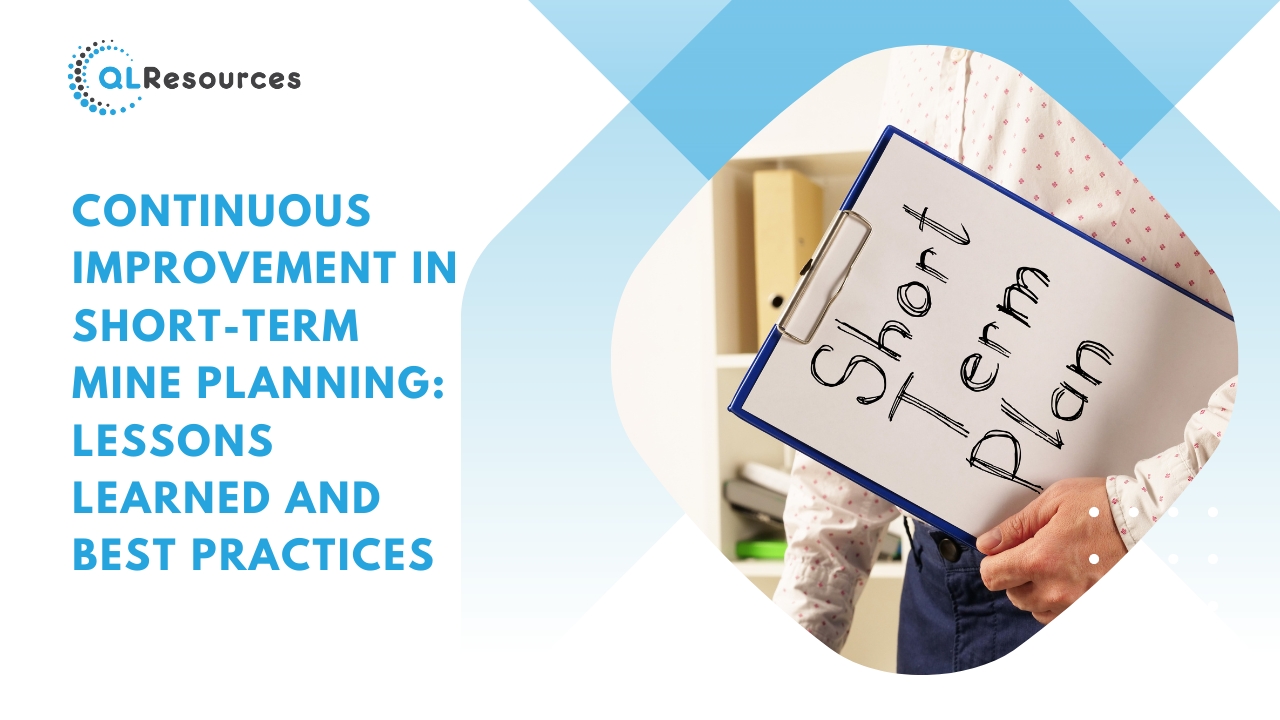
Short-term mine planning is crucial for optimising daily operations, maximising productivity, and ensuring the efficient extraction of mineral resources. This article explores the concept of continuous improvement in short-term mine planning, highlighting lessons learned and best practices for enhancing operational efficiency and productivity.
1. Data-Driven Decision Making:
Embrace a data-driven approach to short-term mine planning, utilising real-time data from various sources such as mine sensors, production reports, and geological surveys. By analysing this data, mining engineers can make informed decisions to optimise production schedules, equipment utilisation, and ore quality management.
2. Regular Performance Review:
Conduct regular performance reviews to assess the effectiveness of short-term mine plans and identify areas for improvement. Analyse key performance indicators (KPIs) such as production targets, ore grades, and equipment utilisation to evaluate plan execution and identify deviations from targets.
3. Feedback Loop from Operations:
Establish a feedback loop between mine planning and operations teams to capture insights and lessons learned from day-to-day activities. Encourage frontline workers to provide feedback on the feasibility and effectiveness of short-term plans, allowing for continuous refinement and improvement.
4. Integration of Technology:
Leverage advanced technologies such as mine planning software, automation systems, and digital twins to streamline short-term planning processes and improve accuracy. These technologies enable engineers to visualise mine operations, simulate scenarios, and optimise production schedules in real time.
5. Scenario Analysis and Sensitivity Testing:
Conduct scenario analysis and sensitivity testing to assess the impact of different factors on short-term mine plans. Evaluate scenarios based on variations in ore grades, equipment availability, and market demand to identify optimal strategies for maximising profitability and minimising risks.
6. Cross-Functional Collaboration:
Foster collaboration between mine planning, operations, geology, and maintenance teams to align objectives and share expertise. Collaborative planning sessions allow stakeholders to leverage their collective knowledge and experience, resulting in more robust and practical short-term mine plans.
7. Continuous Training and Development:
Invest in training and development programs to enhance the skills and capabilities of mine planning professionals. Provide training on new technologies, software tools, and best practices in mine planning to empower engineers to make informed decisions and drive continuous improvement.
8. Performance Metrics and Benchmarking:
Establish performance metrics and benchmarks to track progress and compare performance against industry standards. Benchmarking against peer operations helps identify areas of strength and areas for improvement, driving ongoing optimisation efforts.
9. Adaptive Planning Strategies:
Implement adaptive planning strategies that allow for flexibility and responsiveness to changing conditions. Develop contingency plans and alternative scenarios to address unexpected events such as equipment breakdowns, adverse weather conditions, or fluctuations in market demand.
10. Regular Review and Adjustment:
Regularly review and adjust short-term mine plans based on feedback, performance data, and changing business conditions. Continuously iterate and refine plans to incorporate lessons learned and adapt to evolving operational requirements.
Conclusion:
Continuous improvement in short-term mine planning is essential for optimising productivity, maximising resource utilisation, and achieving operational excellence. By embracing a data-driven approach, fostering collaboration, leveraging technology, and maintaining a focus on performance improvement, mining companies can enhance the efficiency and effectiveness of their short-term planning processes, driving sustainable growth and profitability.